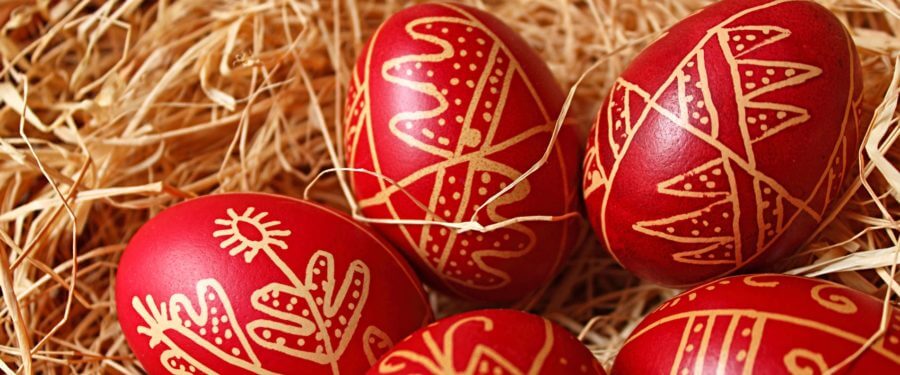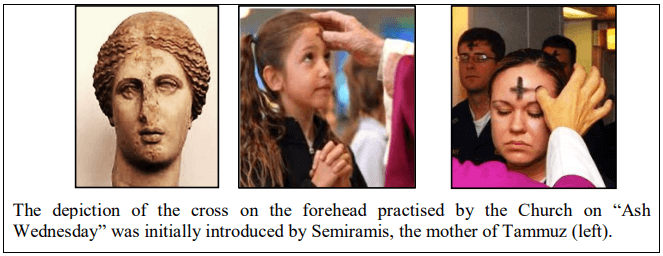
The Pagan roots of Easter
By Dr Muhammad Solaiman
What is Easter?
Easter is the celebration of the resurrection of Jesus Christ (peace be upon him, PBUH) from the dead. Unlike most holidays, Easter does not fall on the same date each year.
When is Easter?
Easter is the first Sunday after the full moon following the March Equinox. This year, most Christians in Western countries who follow the Gregorian calendar will celebrate Easter on Sunday, April 21. On the other hand, the Easter of the Orthodox who follow the Julian calendar falls on Sunday, April 28.
Why do Christians celebrate Easter?
On Easter, Christians celebrate the resurrection of Jesus Christ from the dead. The Nicene Creed states (AD 235): “On the third day he rose again in accordance with the Scriptures”. According to the Scripture:
“He (Jesus) answered, “A wicked and adulterous generation asks for a sign! But none will be given it except the sign of the prophet Jonah. For as Jonah was three days and three nights in the belly of a huge fish, so the Son of Man will be three days and three nights in the heart of the earth”(Matthew 12:39-40).
According to Paul, the resurrection of Jesus (PBUH) is part of the plan of salvation and redemption of Adam’s sin.
“For since death came through a man, the resurrection of the dead comes also through a man. For as in Adam all die, so in Christ, all will be made alive (1 Corinthians 15:21-22).
Pagan roots of Easter
What most Christians do not know is that for thousands of years before Christianity, pagans celebrated earlier forms of Easter called by many names as festivals of spring and the re-emergence of life. The name Easter comes from Eostre; a Saxon goddess of spring. Her symbol was the rabbit and the pagan Anglo-Saxons made offerings of coloured eggs to her, at the Vernal Equinox.
In addition, the idea of the celebration of the resurrection of Jesus (PBUH) is parallel, in one way or another, to the resurrection of gods and goddesses like Baal, Horus, Dionysus and Ishtar.
Roots of the rituals of Easter
Lent
Lent is one of the rituals of Easter. It is a forty-day fast following Ash Wednesday until Easter Sunday. The term Lent was derived from the Old English term lencten, which means spring. It is alleged that Christians fast Lent as Jesus (PBUH) did following his baptism. However, it should be mentioned that both Ash Wednesday and Lent becameofficial celebrations in the Council of Laodicea 360 years after Jesus (PBUH)!
The root of Lentgoes back to the story of Tammuz. He was the only begotten son of the moon-goddess Semiramis and her sun god, Nimrod (Baal). After Tammuz was killed by a wild pig, his mother Semiramis mourned him for 40 days (one day for each year of his life), before allegedly bringing him back to life from the dead. After his resurrection, a joyful feast of Ishtar (Easter) took place. Therefore, Lent is evidently a festival in commemoration of the death and resurrection of Tammuz. Interestingly, the mourning of Tammuz was forbidden by the Bible.
“Then he brought me to the entrance of the north gate of the house of the Lord, and I saw women sitting there, mourning for Tammuz. He said to me, ‘Do you see this, son of man? You will see things that are even more detestable than this’” (Ezekiel, 8:14-15). On “Ash Wednesday”, the Cross of Tammuz is depicted by the Christian priests on the forehead of Christians. The depiction of the cross of Tammuz was initially introduced by Semiramis as shown in the figure below. Furthermore, the meat of the pig (ham) that killed Tammuz is eaten on Easter; although eating swine is forbidden in the Bible (See Leviticus 11:7-8).

Hot cross buns
Hot cross buns are commonly eaten on Good Friday. But, Christians do not know the pagan origin of this practice. Making cakes of bread (buns) was a ritual for the celebration of the feast of Ishtar (Ashtoreth and the Queen of Heaven). This pagan ritual is told by the Bible in a vision of the Prophet Jeremiah and its practice by some Israelite women was condemned:
“Do you not see what they are doing in the towns of Judah and in the streets of Jerusalem? The children gather wood, the fathers light the fire, and the women knead the dough and make cakes of bread for the Queen of Heaven. They pour out drink offerings to other gods to provoke me to anger. But am I the one they are provoking, declares the LORD. Are they not rather harming themselves, to their own shame? … My anger and My wrath will be poured out on this place” (Jeremiah, 7:17-20).

Eggs and chocolate bunnies
Both the eggs and rabbits of Easter are symbols of fertility. Notice that Semiramis is the fertility goddess. Eggs also served as a metaphor for the birth of the universe by the Norse in Europe. On the other hand, the symbol of the Saxon goddess of spring was a rabbit and pagan Anglo-Saxons offered coloured eggs for her, at the Vernal Equinox. Today Egyptians, in the spring festivals of “Sham El-Nasim”, colour eggs as the Ancient Egyptians did thousands of years ago. Colouring eggs has been also practised for thousands of years by in the Persians in the feast of “Nowruz”.


The controversy of the burial and resurrection of Jesus
The death and resurrection of Jesus are the most important events, and one of the foundations of the Christian faith. The Nicene Creed states: “On the third day he rose again in accordance with the Scriptures”. According to Christians, the resurrection of Jesus is considered as a part of the plan of salvation and redemption of man’s sin.
Most Christian denominations believe that Jesus (PBUH) died on the cross and was buried and resurrected after three days.
“He (Jesus) answered, “A wicked and adulterous generation asks for a sign! But none will be given it except the sign of the prophet Jonah. For as Jonah was three days and three nights in the belly of a huge fish, so the Son of Man will be three days and three nights in the heart of the earth”( Matthew 12:39-40).
“When they came together in Galilee, he said to them, “The Son of Man is going to be delivered into the hands of men. They will kill him, and on the third day he will be raised to life.” And the disciples were filled with grief” (Matthew 17:22-23).
Now, if the burial of Jesus (PBUH) was late on Friday and his resurrection was early morning on Sunday, the duration in the heart of the earth is then about 36 hours (one and half day) and not 72 hours (three days and three nights) as stated above in Matthew (12:40).
This means that the assumption that Jesus was buried and resurrected after three days is questionable.
Conclusion
1. Easter was originally a spring celebration of the resurrection of gods and goddesses of the Ancient Egyptians, Persians and Europeans thousands of years before Jesus (PBUH).
2. Many of the traditions and symbols that play a key role in Easter observances have roots in pagan celebrations.
3. The story of the burial of Jesus (PBUH) and his resurrection after three days, as described in the Bible, is not coherent and it’s questionable.

